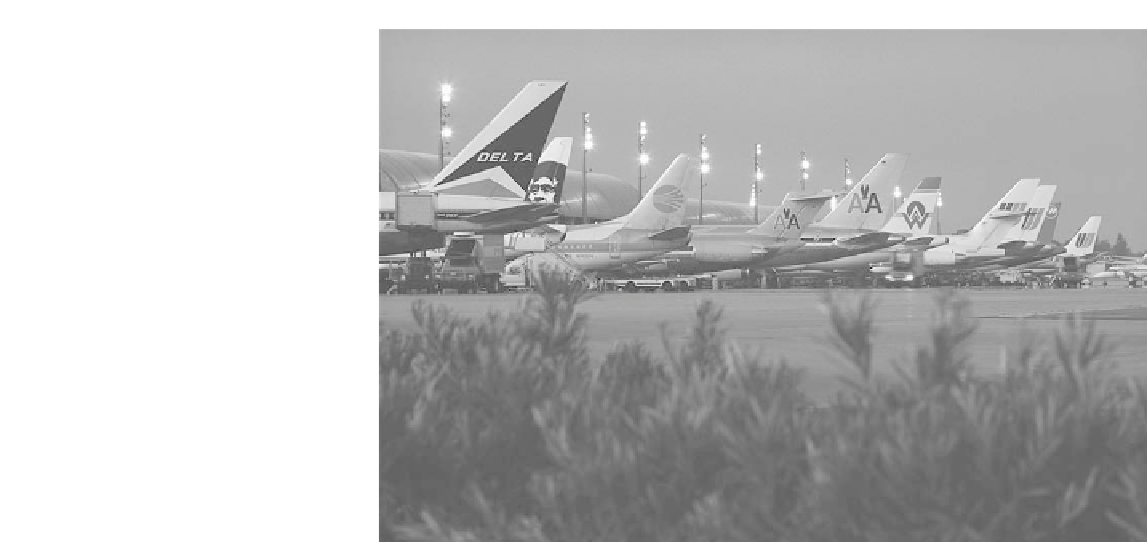Travel Reference
In-Depth Information
A jet aircraft can carry hundreds of passengers in a minimum amount of time. Air travel is the most
comfortable mode for mid- to long-distance trips.
PhotocourtesyofCorbisDigitalStock.
for the
category. After eliminating reclining seats, window blinds, seat rest covers,
and seat pockets, Ryan Air is making noises about charging passengers to use the toilets and selling
standing room. Realistic or not, it is keeping the Ryan Air name in front of the public.
The bright spot in the global air industry is Asia and the Paci
c. The dynamic economy of the region
is making its own airlines pro
table and helping carriers from outside the region with extensive Asia/
Paci
c operations. At present, the Orient is the world
''
ultra-low-fare
''
'
is number-one growth center for air travel.
s economy and the tourism industry need a healthy air transportation system. Without
airline passengers, rental cars go unrented, hotel beds go unsold, and attractions go unvisited. The
airlines have revolutionized long-haul travel, and the range and speed of jet travel have greatly
expanded what tourists or business travelers could once accomplish with the equivalent time and
funds at their disposal.
Today, for example, it is possible to
fly around the globe in less time than it takes to drive across the
United States. The system is also incredibly ef
cient: You need to make only one call to an airline or a
travel agent or get on the Internet to purchase a ticket to your desired destination; then all you have to
do is go to the airport and check your bags through to the
final destination. The logistics that make it
happen are complex, but the system works well. For example, the new United (together with United
Express, Continental Express, and Continental Connection) operates a total of approximately 5,800
flights a day to 371 destinations throughout the Americas, Europe, and Asia (
www.united.com
).
Although the major advantage of air travel is speed, which results in more time for other activities,
there are negative aspects for those who wish to travel by air. These include some people
The world
'
s fear of
flying and a lack of geographic accessibility, since many communities in the country are not served by
air transportation. An additional problem is the length of time spent getting to and from the airport.
Frequently, this time exceeds that spent en route.
In the United States, the Air Transport Association classi
es air carriers as major if they record over
$1 billion in revenue annually. There are 20: ABX, AirTran Airways, Alaska Airlines, American Airlines,
American Eagle, ATA, Atlas/Air, Comair, Continental Airlines, Delta Air Lines, ExpressJet, FedEx,
Frontier, JetBlue, Mesa, SkyWest, Southwest Airlines, United Airlines, UPS Airlines, and US Airways.
National carriers are those recording annual revenues of $100 million to $1 billion and include Air
Transport International, Air Wisconsin Airlines, Allegiant, Aloha Airlines, Amerijet, Arrow Air, ASTAR
Air Cargo, Continental Microensia, Evergreen International Airlines, Executive Airlines, Florida West,
'








Search WWH ::

Custom Search